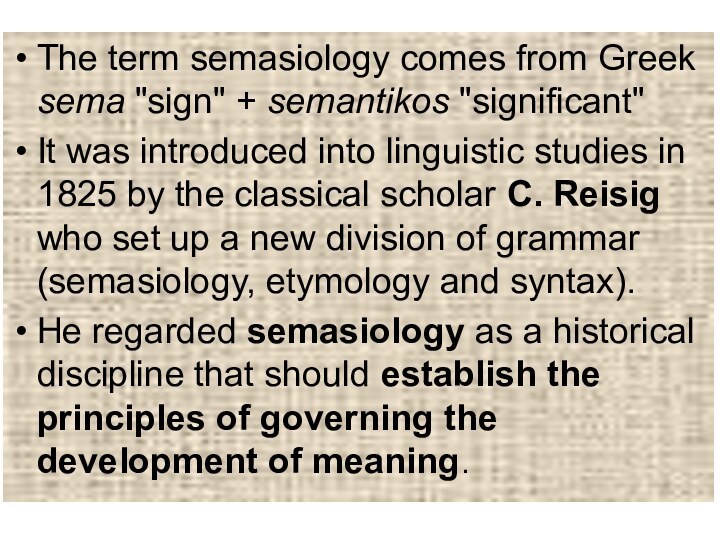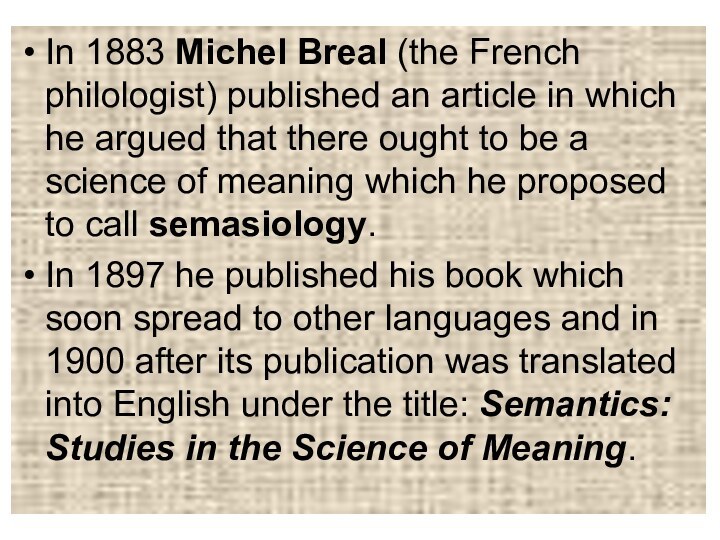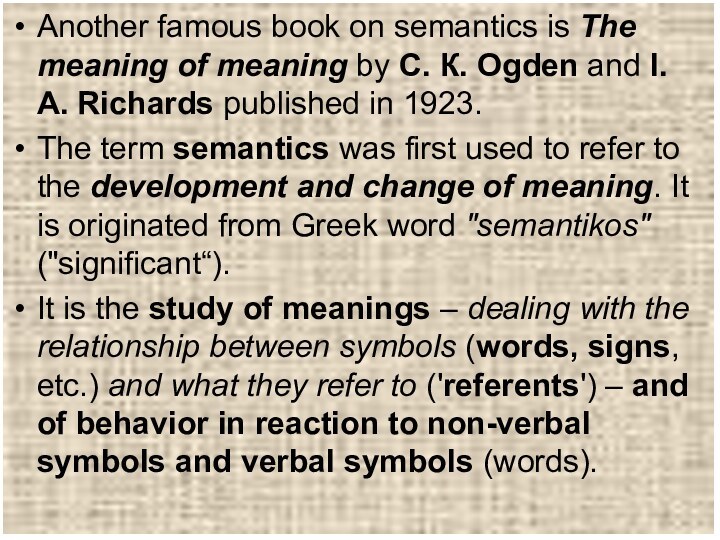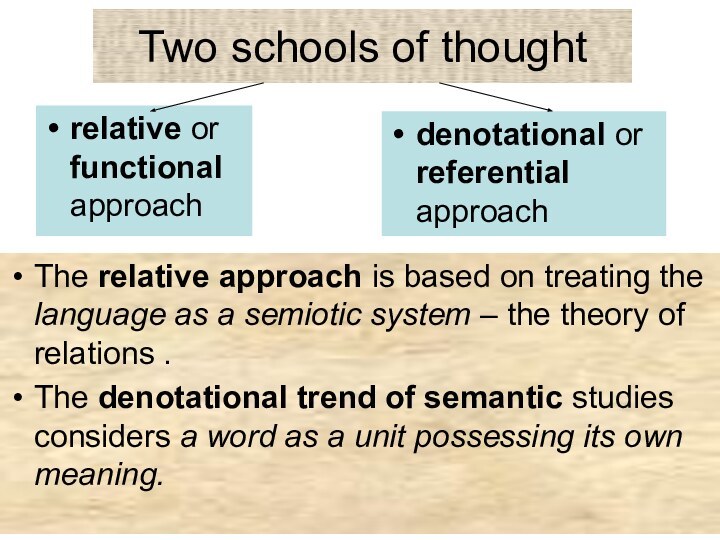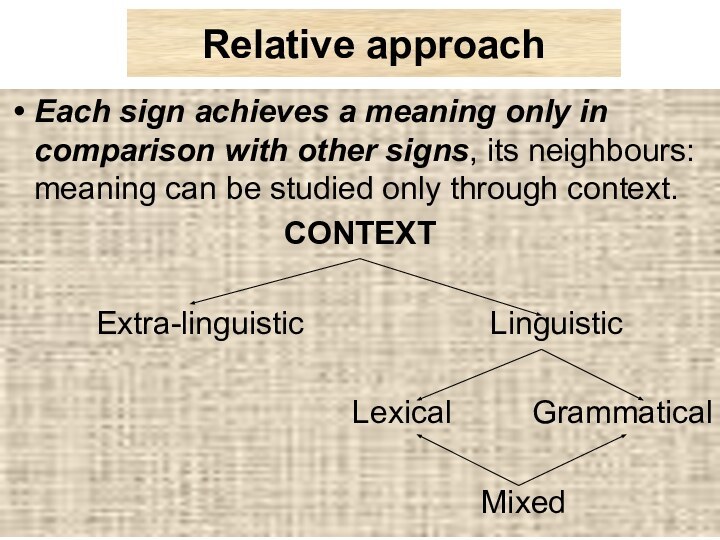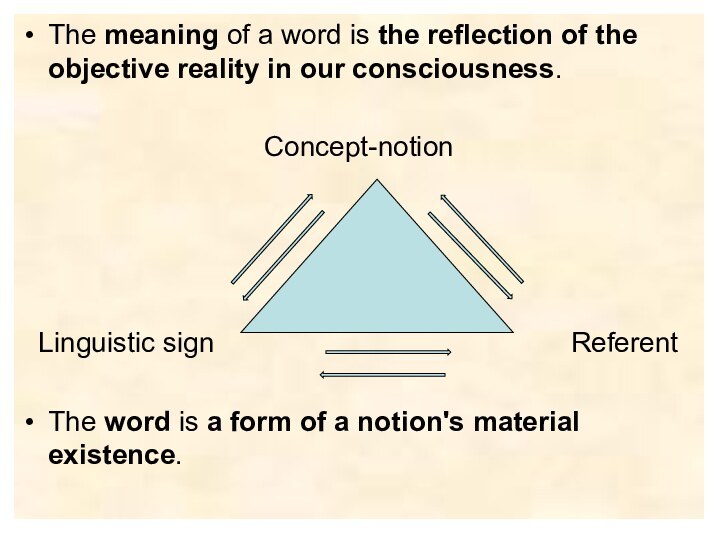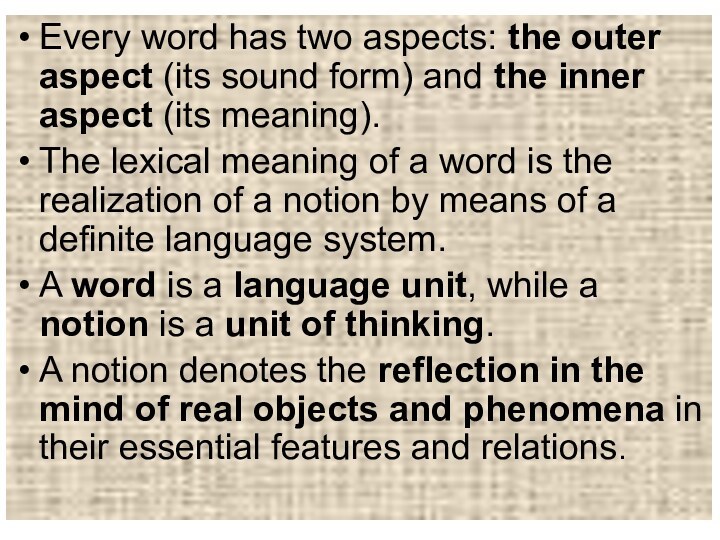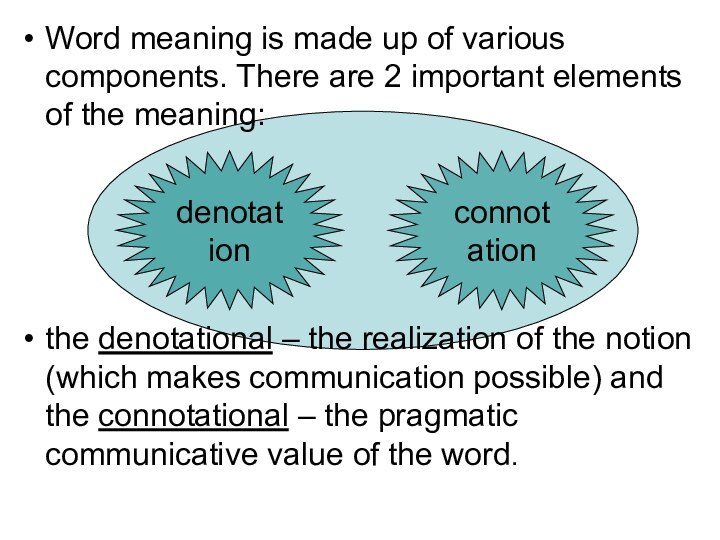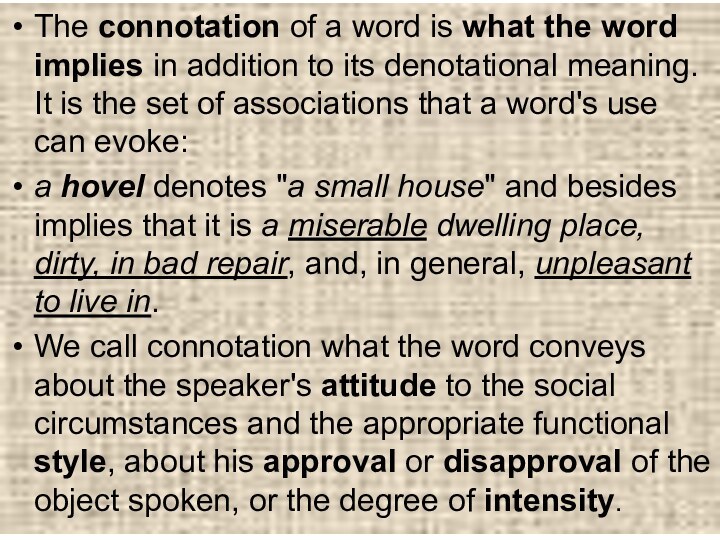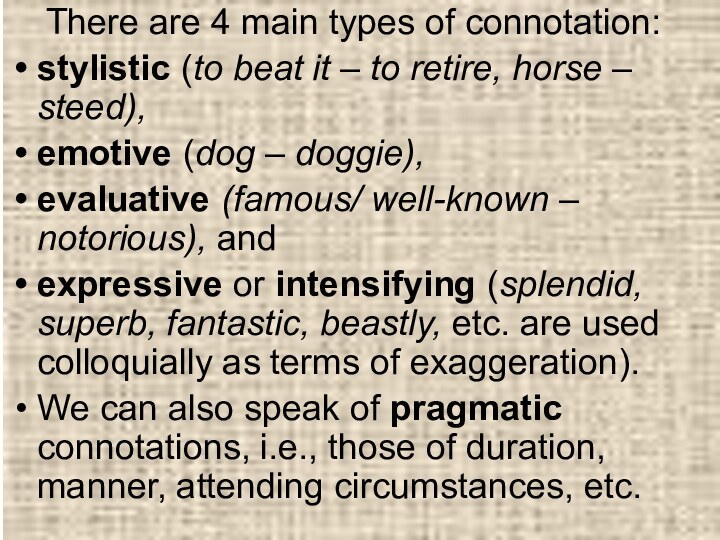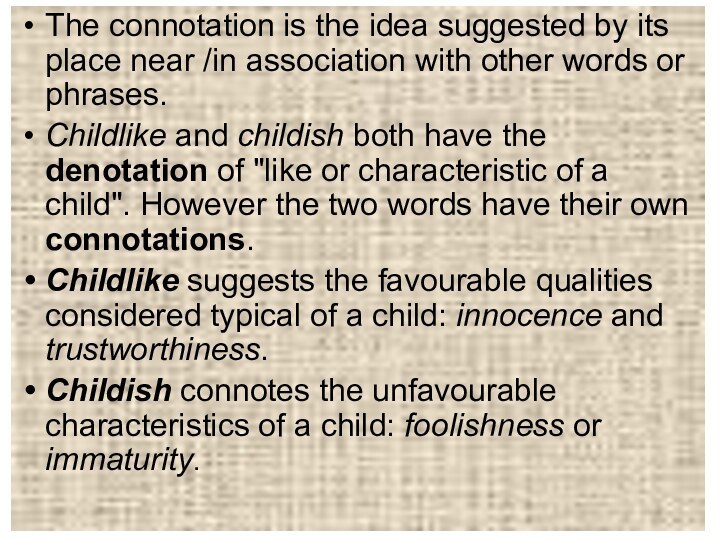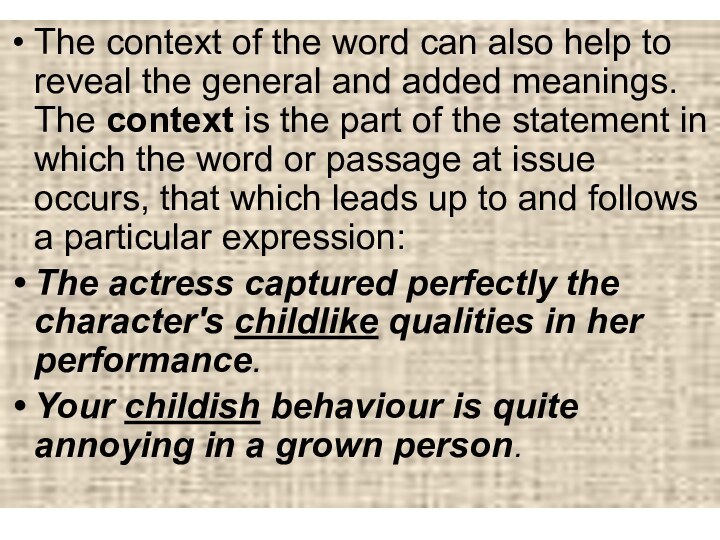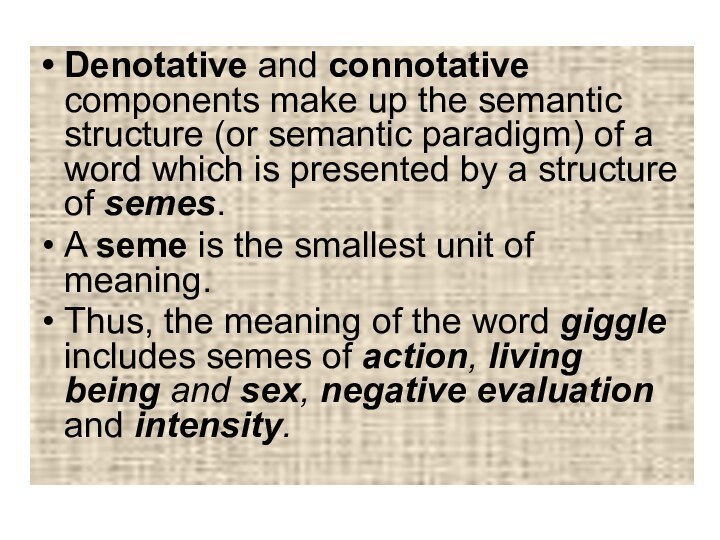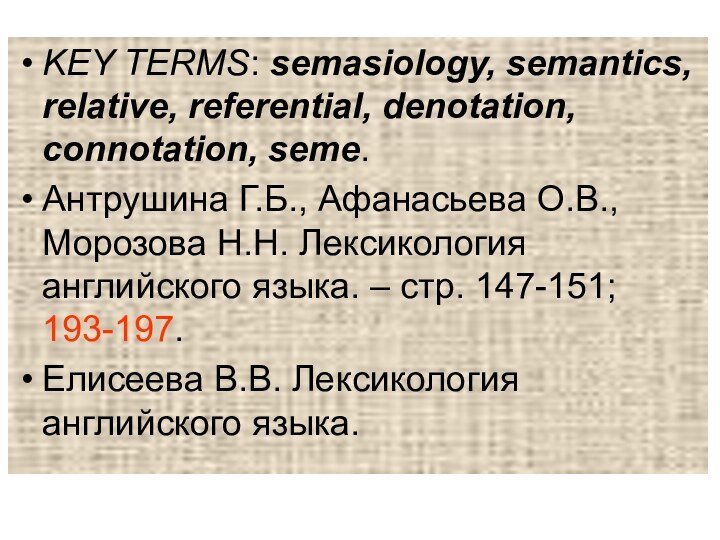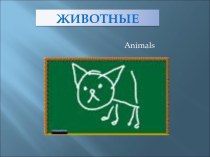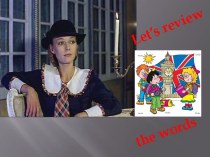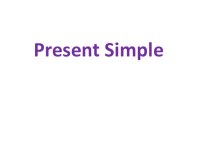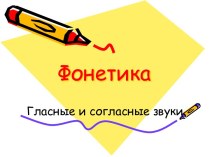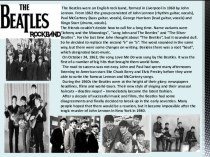Слайд 2
The term semasiology comes from Greek sema "sign"
+ semantikos "significant"
It was introduced into linguistic studies
in 1825 by the classical scholar C. Reisig who set up a new division of grammar (semasiology, etymology and syntax).
He regarded semasiology as a historical discipline that should establish the principles of governing the development of meaning.
Слайд 3
In 1883 Michel Breal (the French philologist) published
an article in which he argued that there ought
to be a science of meaning which he proposed to call semasiology.
In 1897 he published his book which soon spread to other languages and in 1900 after its publication was translated into English under the title: Semantics: Studies in the Science of Meaning.
Слайд 4
Another famous book on semantics is The meaning
of meaning by С. К. Ogden and I. A.
Richards published in 1923.
The term semantics was first used to refer to the development and change of meaning. It is originated from Greek word "semantikos" ("significant“).
It is the study of meanings – dealing with the relationship between symbols (words, signs, etc.) and what they refer to ('referents') – and of behavior in reaction to non-verbal symbols and verbal symbols (words).
Слайд 5
Two schools of thought
relative or functional approach
denotational
or referential approach
The relative approach is based on
treating the language as a semiotic system – the theory of relations .
The denotational trend of semantic studies considers a word as a unit possessing its own meaning.
Слайд 6
Relative approach
Each sign achieves a meaning only in
comparison with other signs, its neighbours: meaning can be
studied only through context.
CONTEXT
Extra-linguistic Linguistic
Lexical Grammatical
Mixed
Слайд 7
Referential approach
The main problem is the relation
between the word, its meaning and the object in
reality which it denotes.
The basis of the denotational theory is the double nature (ideal and material) of the word.
The material side of the word (symbol), its meaning, and the referent are connected with one another.
Слайд 8
The meaning of a word is the reflection
of the objective reality in our consciousness.
Concept-notion
Linguistic sign
Referent
The word is a form of a notion's material existence.
Слайд 9
Every word has two aspects: the outer aspect
(its sound form) and the inner aspect (its meaning).
The lexical meaning of a word is the realization of a notion by means of a definite language system.
A word is a language unit, while a notion is a unit of thinking.
A notion denotes the reflection in the mind of real objects and phenomena in their essential features and relations.
Слайд 10
Notions, as a rule, are international.
Meanings can
be nationally limited.
The development of lexical meanings in
any language, as well as the grouping of meanings in the semantic structure of a word, is determined by the whole system of every language.
Слайд 11
Word meaning is made up of various components.
There are 2 important elements of the meaning:
the
denotational – the realization of the notion (which makes communication possible) and the connotational – the pragmatic communicative value of the word.
denotation
connotation
Слайд 12
The denotation of a word is the direct
explicit meaning that makes communication possible.
When we say
that a word denotes something, we mean that it is the name of a thing.
To denote is to serve as a linguistic expression for a concept.
The conceptual content of a word is expressed in its denotative meaning.
Слайд 13
The connotation of a word is what the
word implies in addition to its denotational meaning. It
is the set of associations that a word's use can evoke:
a hovel denotes "a small house" and besides implies that it is a miserable dwelling place, dirty, in bad repair, and, in general, unpleasant to live in.
We call connotation what the word conveys about the speaker's attitude to the social circumstances and the appropriate functional style, about his approval or disapproval of the object spoken, or the degree of intensity.
Слайд 14
There are 4 main types of connotation:
stylistic (to
beat it – to retire, horse – steed),
emotive (dog
– doggie),
evaluative (famous/ well-known – notorious), and
expressive or intensifying (splendid, superb, fantastic, beastly, etc. are used colloquially as terms of exaggeration).
We can also speak of pragmatic connotations, i.e., those of duration, manner, attending circumstances, etc.
Слайд 15
The connotation is the idea suggested by its
place near /in association with other words or phrases.
Childlike
and childish both have the denotation of "like or characteristic of a child". However the two words have their own connotations.
Childlike suggests the favourable qualities considered typical of a child: innocence and trustworthiness.
Childish connotes the unfavourable characteristics of a child: foolishness or immaturity.
Слайд 16
The context of the word can also help
to reveal the general and added meanings. The context
is the part of the statement in which the word or passage at issue occurs, that which leads up to and follows a particular expression:
The actress captured perfectly the character's childlike qualities in her performance.
Your childish behaviour is quite annoying in a grown person.
Слайд 17
Denotative and connotative components make up the semantic
structure (or semantic paradigm) of a word which is
presented by a structure of semes.
A seme is the smallest unit of meaning.
Thus, the meaning of the word giggle includes semes of action, living being and sex, negative evaluation and intensity.

